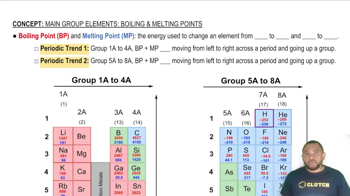Textbook Question
Three identical tubes are filled with different liquids; water, ethylene glycol, and olive oil. A small steel sphere was dropped into the tube, and the time it took to fall to the bottom was recorded. Which property of liquids is responsible for the differences in time for the sphere to fall through the liquid? (LO 11.1)
(a) Surface tension
(b) Boiling point
(c) Viscosity
(d) Vapor pressure




